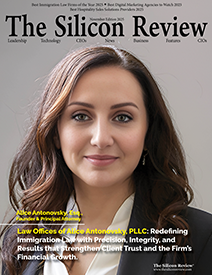>>
Industry>>
Banking and insurance>>
AI, Interest Cuts & Insurance ...AI, Interest Cuts & Insurance Exits: Is the Financial Sector Entering a New Era of Automation?
The Silicon Review
23 April, 2025
As rate cuts loom and insurers exit U.S. markets, banks and carriers are quietly pivoting to automation and AI to navigate regulatory risks and geopolitical ambiguity.
A confluence of financial disruption is redrawing the strategic maps of banks and insurers across the U.S., with automation and AI now stepping out of the experimental shadows into executive war rooms. The Federal Reserve’s anticipated rate cut is signaling the beginning of a softer monetary policy cycle—one that could offer relief to borrowers but challenge net interest margins for banks already facing revenue compression. Simultaneously, political uncertainty tied to the potential return of former leadership is creating hesitation among foreign investors and global insurers. This week, UK-based Admiral Group announced its divestiture from U.S. insurance operations, citing an increased regulatory burden and margin unpredictability. While the move appears isolated, insiders interpret it as part of a wider recalibration by international insurers seeking flexibility through alternative risk platforms and tech-enabled underwriting models.
In parallel, cybersecurity and AI investments are quietly becoming the backbone of strategic realignment across financial institutions. With the growing threat of digital fraud and ransomware targeting banks’ backend systems, automation is not just a cost-control lever—it’s a risk-mitigation mandate. Major financial institutions are accelerating adoption of machine learning tools for transaction monitoring, behavioral analytics, and claims management. Industry analysts warn that firms failing to invest in intelligent automation risk falling behind on compliance adaptability and operational resilience. The shift isn’t just about efficiency; it’s a structural response to macroeconomic volatility. Executives are re-evaluating human-capital-heavy processes, seeking long-term savings and stronger defenses against emerging market instabilities.
This pivot may mark the beginning of a digitally fortified era in banking and insurance—where algorithmic agility defines success more than legacy scale. For leaders in the space, staying ahead will depend on faster deployment of AI-driven frameworks that not only respond to change, but preempt it.


_2025-11-17_06-38-14.webp)

 (1)_2025-10-21_13-35-14.webp)

_2025-10-02_10-21-48.webp)